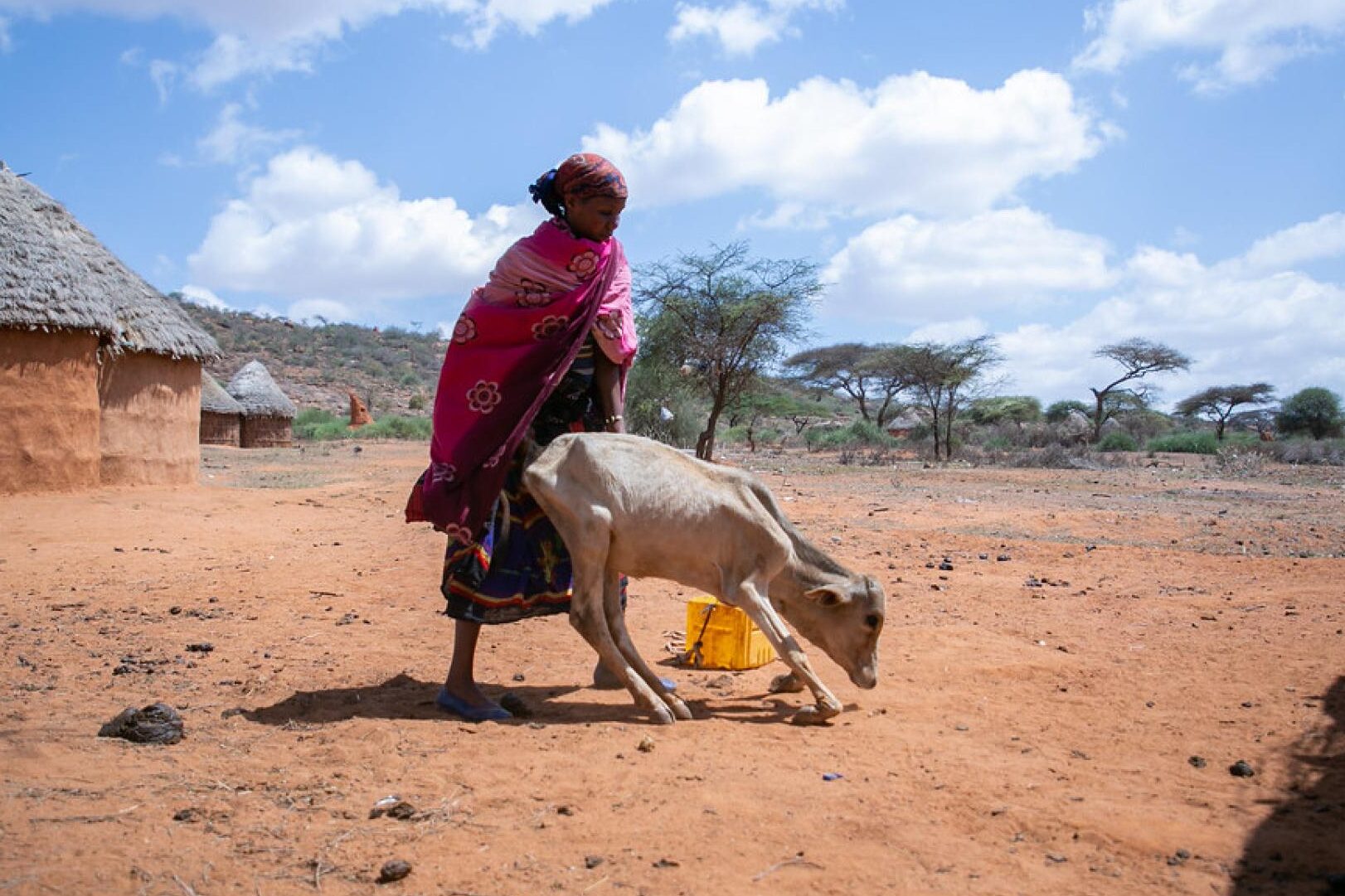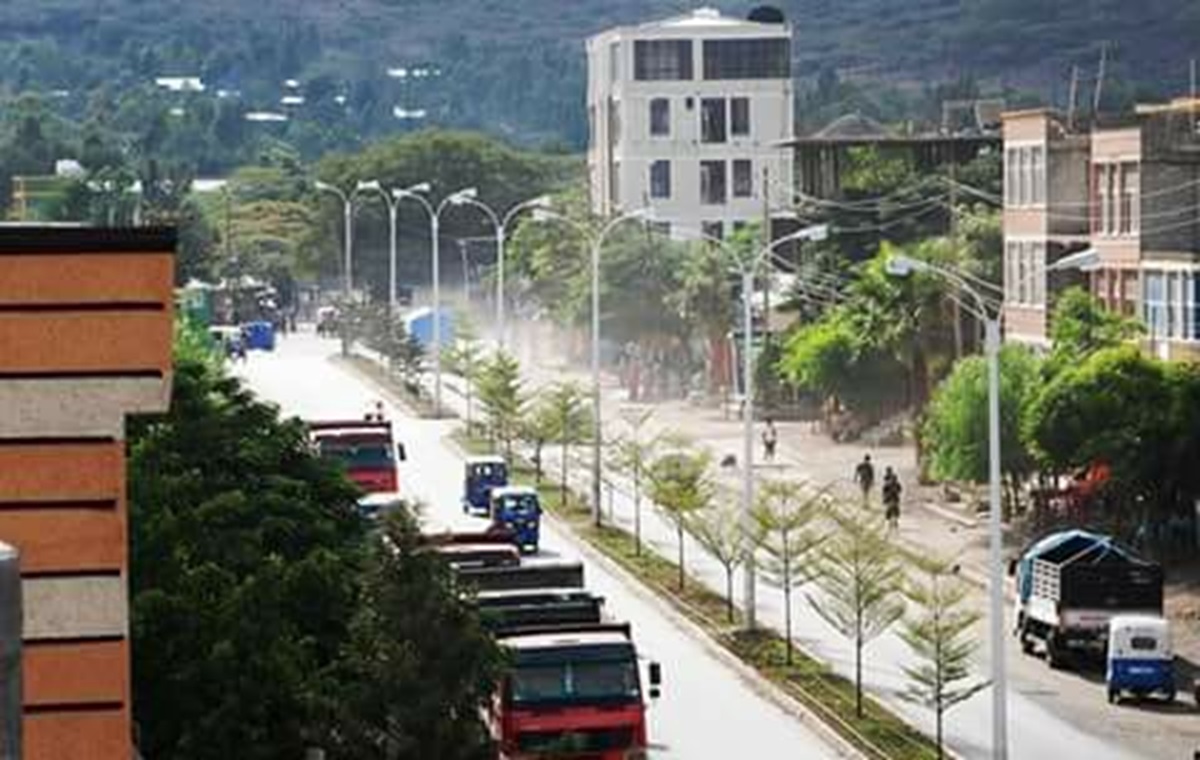Commentary: After all livestock are dead, now what is left for Borana pastoralists? Unveiling devastating impacts of prolonged drought

By Galgalo Dika (PhD) @galgalodiqa
Addis Abeba – The earth’s climate has been changing from time to time due to various anthropogenic and natural factors. Raise in global temperature, sea level rise, and increased fossil fuel consumption has been increasing global risks of consequences of climate change globally. With climatic conditions of increased dryness, temperature surges, and lack of rainfall for a long period, recently greater Horn of Africa has been experiencing serious impacts of prolonged drought, according to a recent UN OCHA report.
“Across the Horn of Africa, at least 36.1 million people have been affected by the drought including 24.1 million in Ethiopia, 7.8 million in Somalia, and 4.2 million in Kenya.At least 20.5 million people are already waking each day to high levels of acute food insecurity and this figure could increase to between 23 and 26 million by February 2023,” the report says.
In 2023 these numbers are feared to increase and the drought is currently affecting the entire horn of Africa severely. In Ethiopia, drought has affected livestock production and the livelihoods of the pastoralists resulting in heavy economic loss. Though many areas of Ethiopian pastoralist have been affected by this devastating impact of drought, Borana pastoralist areas are the worst affected.
Though Borana drylands have a long history with routinely occurring drought consequences, currently the severity, length, and frequency of drought have been changing. The damage and losses incurred due to the recent drought by Borana pastoralists are never seen before in history.
According to unpublished Borena Zone Multi-Agency Rapid Assessment Report the absence of five consecutive seasons of rainfall resulted in prolonged drought in the area. Borana area receives a bimodal pattern of rainfall with the main rains (Ganna) falling between March and May, and the short rains (Hagayya) between September and November. The recent drought is due to the failure of rain for three years.
Lack of rain for three years increased earth’s surface temperature and dryness, which resulted in a critical shortage of pasture and water that lead to the emaciation of livestock and massive deaths of livestock particularly cattle, which is the main livelihood asset of the community. Not only is the productivity of livestock affected, but also the production of agro-pastoralist communities that practice farming beside livestock. These three years have been years of suffering for Borana pastoralists. Let us highlight some of the devastating consequences of the recent prolonged drought on Borana pastoralists below.
Death of millions of livestock

Livestock is a source of wealth and pride as well for Borana pastoralists. According to a recent report, Borana pastoralist has completely lost their livestock to prolonged drought. Above 2.3 million heads of livestock have died due to prolonged drought, which left above 67,000 households with no livestock according to the Rapid Assessment report. This is a complete loss due to drought.
Some pastoralist community members previously known for their wealth has now become destitute with no cow left with them. I know many people with a total loss. Life stories of hundreds of thousands of individuals who shifted from wealth to destitution because of this tragedy can be written. There are even individuals who commit suicide due to the complete loss of livestock. It is painful.
Now the most critical issue is that with an increase in the length of drought in the coming season, more livestock are expected to die. Even the livestock species that are drought resistant like camel and goats are at the edge of serious deaths. Currently, even camels are in very dire conditions as the remaining trees for them to browse are drying.
Food Insecurity and Malnutrition
Loss of the main livelihood base of pastoralists (livestock) and failure of dry-land farming as a result of the recent drought left Borana pastoralists in dire food insecurity and malnutrition. Currently, 772,001 beneficiaries need urgent food assistance of which 604,001 were targeted by Joint Emergency Operations (JEOP); while the remaining 162,000 require urgent food aid.
Similarly, more than 22 thousand of < 5 years children; 23 thousand pregnant and lactating women; and 10 thousand elders have faced acute malnutrition the report revealed.
Depletion of Water and Pasture
The growth of grasses, shrubs, forbs, and other browses are highly dependent on the availability of rainfall. Failure of rainfall for three years resulted in the complete depletion of grasses. Moreover, many of the existing water sources like ponds has been dried up, and well waters have been highly reduced in volume.
The shortage of pasture and water remained critical across the zone and needs serious attention. Across the zone, a serious lack of water for human consumption is reported where more than 807,651 people need urgent water rationing.
Internally Displaced Peoples

According to Borana zone multi-hazard assessment report about 68,866 households (372,193 individuals) were internally displaced and settled at different locations in the zone. These IDPs need urgent humanitarian support like Food and NFI, WASH intervention, Education, Health, Protection and Shelter, and others. According to the recent Borana zone, multi-stakeholders assessment report these IDPs are sheltered in new settlement areas, particularly in Dubuluk, Dirre, Dhas, and Elwaye woredas.
Among this 29,366 HHs have been sheltered in new settlement areas, particularly in Dubuluk, Dhas, Dirre, and Elwaye woredas in 10 IDP sites and also more than 39,500 HHs (close to 221,200 Individuals) are displaced and Sheltered in Host Community, in Dirre, Yabello, Dhas, Dubluk, Elwaye, Moyale, Dillo, Arero and Wachile Woredas In addition some displaced people fled to towns for searching labor opportunity.
Death of Wild Animals

In different blocks of Borana national park and surrounding areas let alone livestock, the wild animals including endemic ones like gravy zebra, wild deer, and gazelle are emaciated and dying of hunger.
School Dropout
Recent drought also results in the dropout of a large number of students from the school in Borana pastoralist areas. According to a recent zonal multi-agency assessment report, from the existing 483 schools in the zone, 136 have no water facilities, and many schools have no feeding program. This situation resulted in about 50% absenteeism and 6% of students dropping out between 2014-2015 academic years due to droughts the reports says. The children from the IPDs have no access to schooling.
Rising in Food Prices
One of the impacts of drought on pastoralists is the rapid rise in the price of food crops and the fall in the price of livestock during drought. Due to the failure of production of main crops like maize from the Borana area, staple food crop like maize is supplied into these areas from central market areas with surplus production. According to the Borana zone multi-agency assessment report, the price of price maize is increase by more than 80 % than before.
In contract to the price of food, the price of livestock is reduced rapidly due to the increased supply of emaciated livestock to the market and reduced demand for cattle. Currently, one cow cannot buy 50 KG of maize at the current price. To buy 100 kg of maize for their family pastoralist household sell more than three cattle. The worst part is when the cattle die on the road to the market as hungry children await their father to bring maize/food from the market. There are many of such cases in Borana recently.
Affected Crop Production
In the Borana zone, significant numbers of agro-pastoralist also practice crop production during the short rainy season of Hagaya and the long rainy season of Ganna. Complete failure of rainfall for more than five rainy seasons resulted in total failure of crop production. As a result, the grain stores of large numbers of agro-pastoralist who produce hundreds of quintals of production of maize, haricot bean, and teff were left empty.
The way forward
It is now no longer a drought in Borana zone. Borana is currently facing the worst famine in history. People are dying of hunger. Therefore, to save Borana, the national regional state government of Oromia should declare a disaster state of emergency in Borana pastoralist areas and call on humanitarian agencies for life saving humanitarian assistance to the drought-stricken pastoralists of the Borana zone.
The global and local humanitarians actors, donor agencies, civil society organizations, philanthropists should strengthen their kind hands for life saving responses of drought stricken Borana pastoralists.
The magnitude of the impacts of recent drought is far more than reported. There are hundreds of thousands of people in the remote areas suffering of hunger. Therefore, this crisis requires also attentions of the media. All national and international Medias should be a voice for this voiceless people.
Editor’s Note: Dr. Galgalo Dika is assistant professor of Development Studies. He can be reached at galgalodiqa@gmail.com







